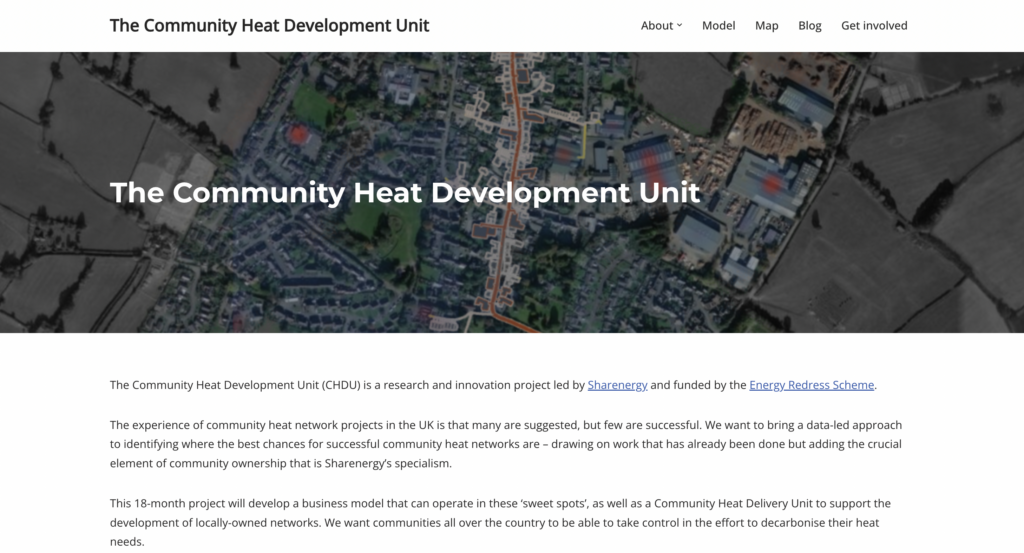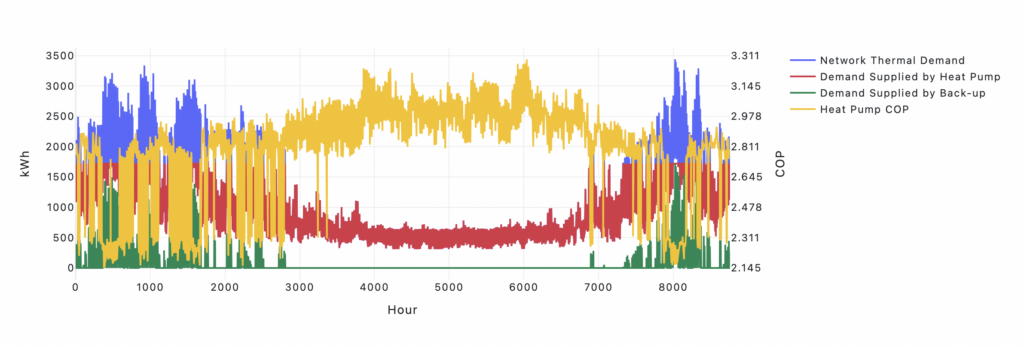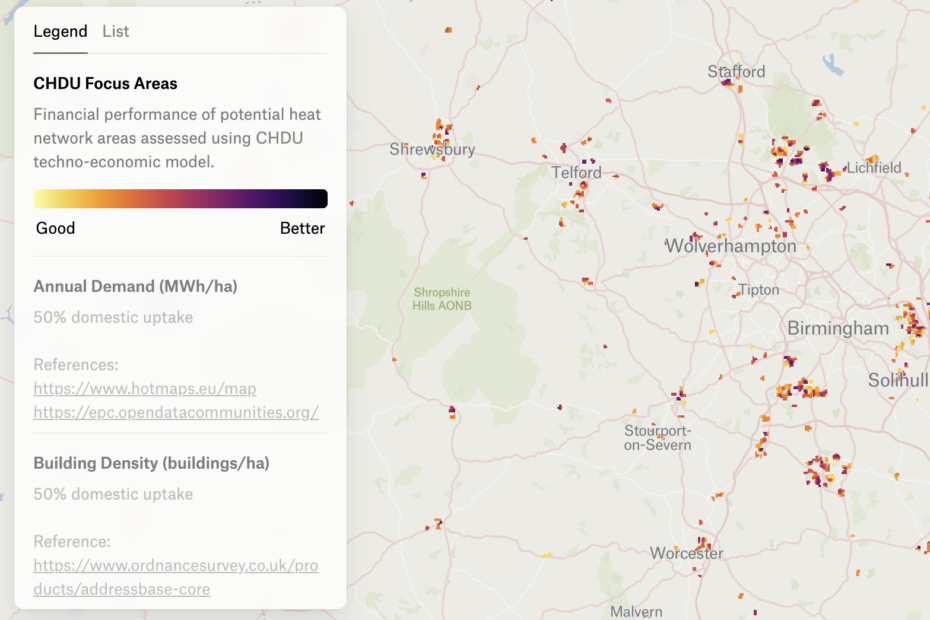Welcome to the third newsletter for Sharenergy’s Community Heat Development Unit (CHDU) project. As a reminder, the aim of this project is to identify locations in mainland Great Britain where centralised, low-carbon district heating networks are most viable, then work with local communities to understand the feasibility of this kind of scheme at a local level. We’re also working to understand how a dedicated unit could support communities to develop district heat networks through design and installation phases and into operation.
We’ve been focused on developing a techno-economic model which we can use to assess the feasibility of potential sites at a high level and have applied this model to a nationwide site search.
Launch of Dedicated Website

We’re pleased to launch our dedicated project website: www.communityheat.org.uk. On this site you’ll find an interactive techno-economic model which we’ve been using to assess the feasibility of potential network sites, along with a digital map which displays the areas which our techno-economic model has identified as being more feasible for heat network development. We’re in the process of writing supporting articles describing our modelling decisions, inputs and techniques. Please bear with us as we develop the site.
Thanks to Martin Crane at Carbon Alternatives for supporting us on aspects of the technical modelling.
An Update on our Modelling Work

Our approach for identifying potential heat network locations has involved developing a techno-economic model of a centralised district heat network which is then applied in a site search process using Geographic Information System (GIS) software. The main features of the CHDU centralised district heat network configuration are:
- Air source heat pumps (ASHPs) are used to provide ~90% of the annual heat demand.
- Domestic properties are included in the networks considered by the CHDU project.
- Non-domestic properties are likely to be needed as part of a viable heat network to act as anchor loads.
- On-site wind generation reduces the cost of electricity used in the heat pumps.
- Large thermal storage tanks enable more of the electricity generated on-site by wind turbine(s) to be used by the heat pumps.
Community Energy England (CEE) recorded us presenting the approach we took to develop our techno-economic model and how we’ve applied it in a nationwide site search. Please visit our website to find out more.
Marches Energy Agency
Marches Energy Agency (MEA) are a CHDU project partner and are currently supporting the project by identifying housing archetypes at potential network sites and modelling domestic heating systems. Their main focus area is assessing the viability of heating domestic buildings, which have been retrofitted to a district heating network, using different network flow temperatures, and evaluating the potential improvements of upgrading radiators and installing insulation.

Lux Nova Partners
Lux Nova Partners have commenced their work advising the CHDU project on the legal considerations of heat network development and operation activities with a specific focus on community ownership models.

Next Steps![]()
Working with CEE we have used the outputs of our site searching process to identify the best potential sites in close proximity to interested community energy organisations. We currently have funding to work with organisations at four of the best locations to develop case studies, which will investigate how the CHDU district heat network configuration could work at specific sites. Alongside this we are exploring the different business models which could be adopted by communities wishing to develop district heat networks. We will be engaging with community organisations to seek feedback on our ideas and better understand what ongoing support is required.
Thank you if you’ve responded to our collaboration request via CEE. We will be getting back to you shortly with details on how we can support you.
Other news
Bishop’s Castle Heat & Wind Project
Sharenergy are also working with Carbon Alternatives on the Bishop’s Castle Heat & Wind Network with resources raised by Shropshire & Telford Community Energy (STCE) from the Community Energy Fund.
The revised feasibility study for the heat network will be available soon and should lead to a bid to the Green Heat Network Fund. A planning application for the proposed 1MW wind turbine was submitted to Shropshire Council on January 16th. Lightfoot (local partners of STCE) held a pop up shop for 6 days commencing on January 13th with the heat network and wind turbine prominently displayed. There was considerable support shown for the heat network and very few concerns about the wind turbine.
For more details see Lightfoot Enterprises
